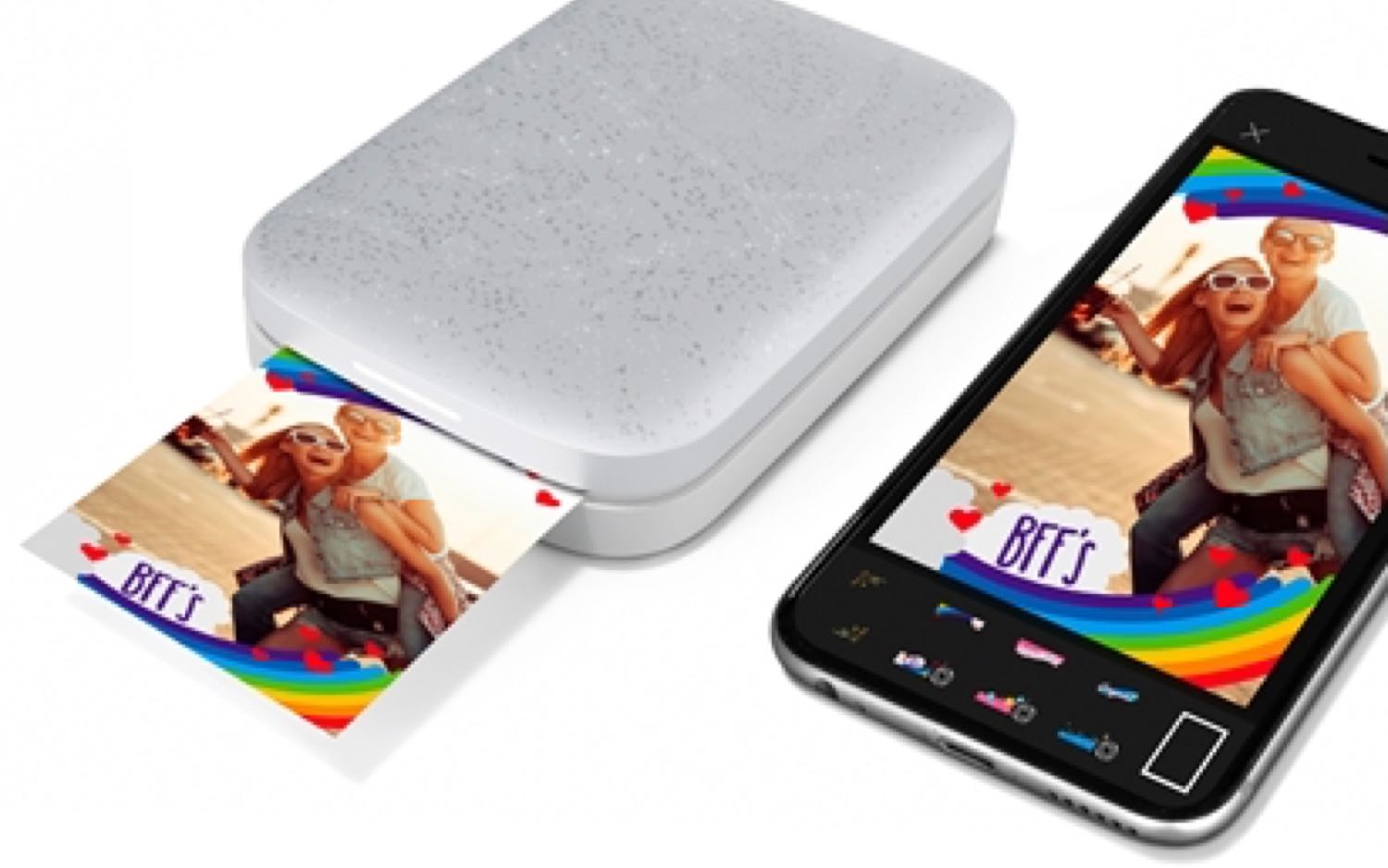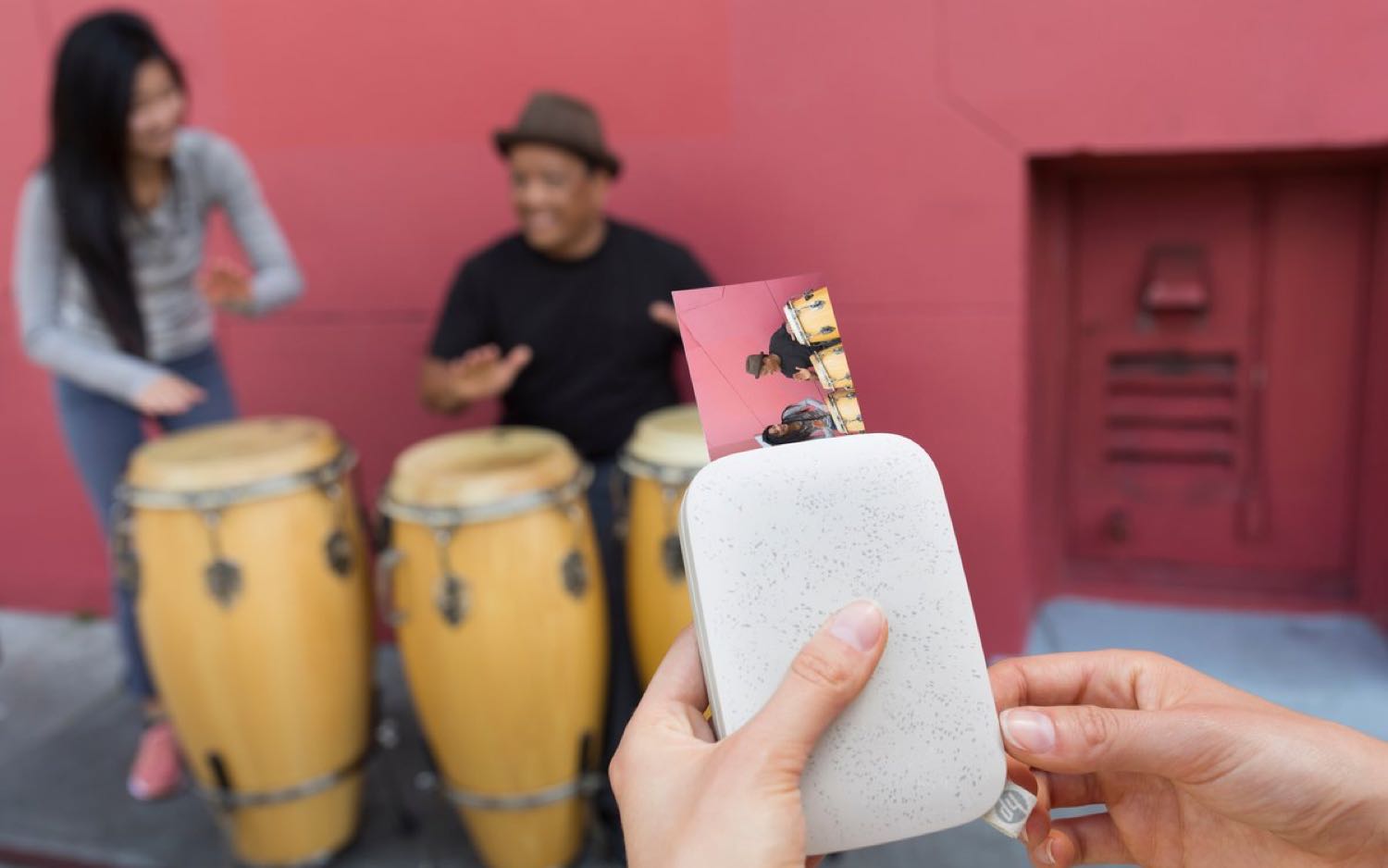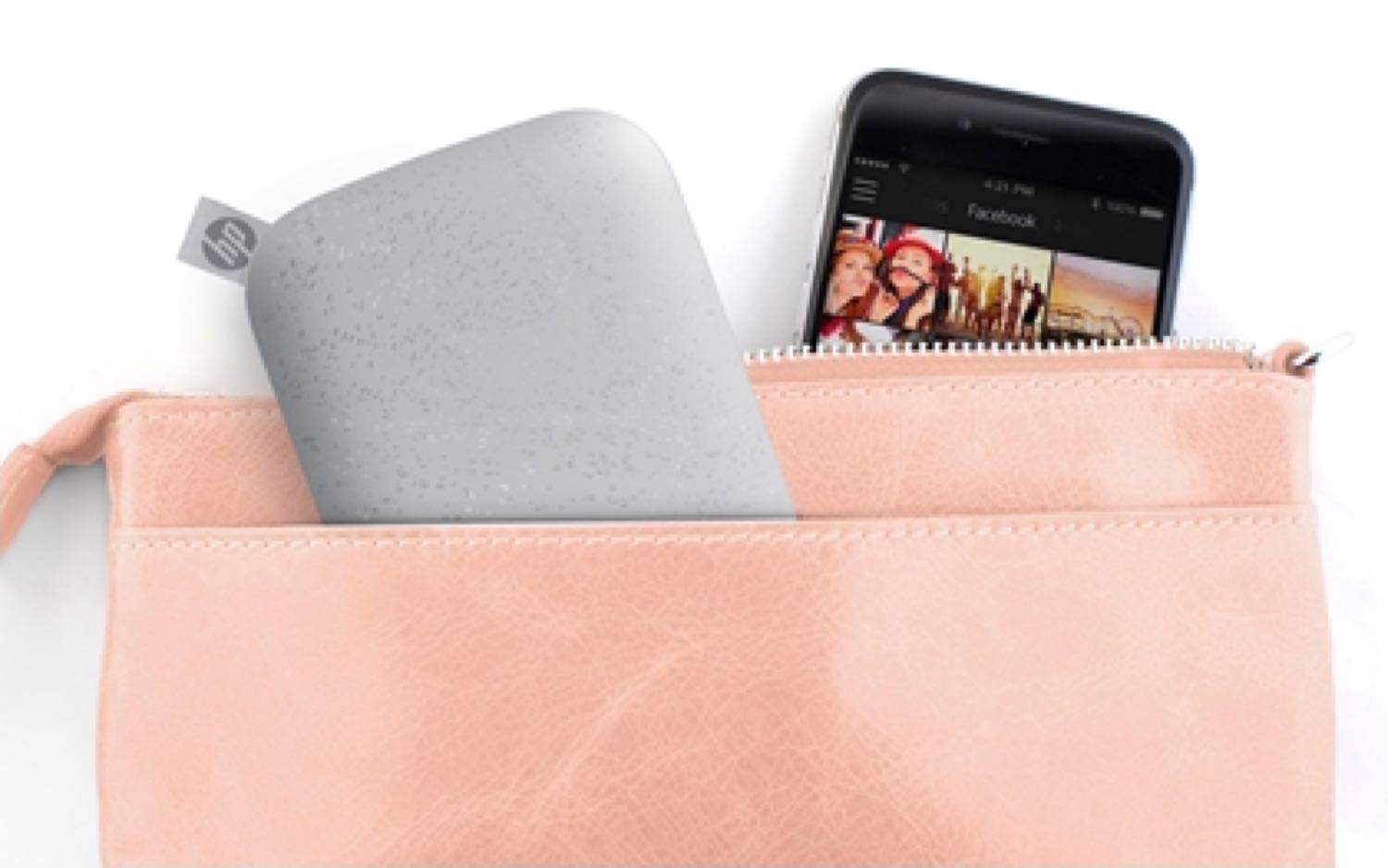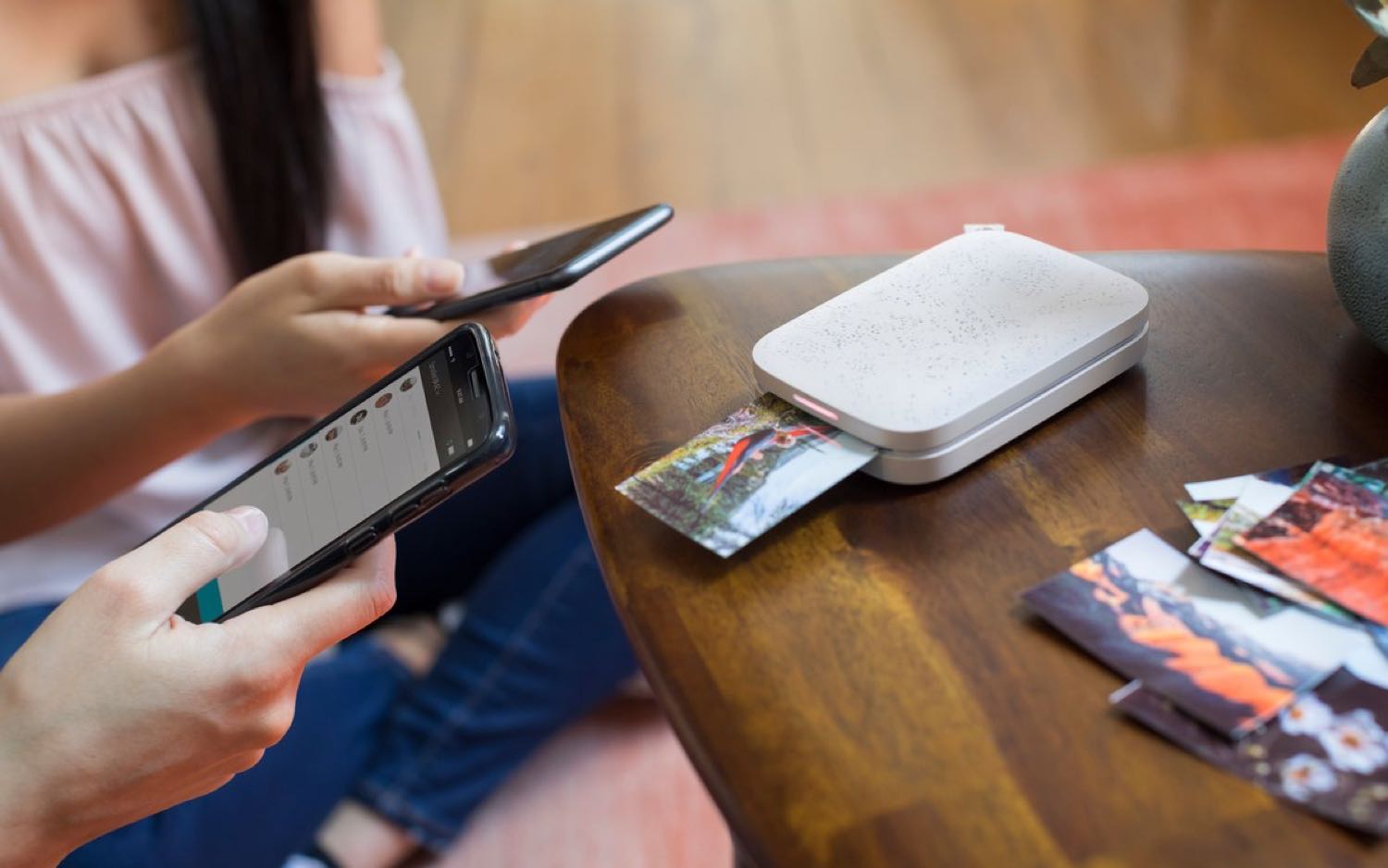Tom's Guide Verdict
The HP Sprocket Photo Printer (2nd Edition) is a compact photo printer that fits into a pocket, but the fun part of photo printing is held back by major color issues.
Pros
- +
Mobile photo printing
- +
Easy to use app
- +
Fun printing and AR options
- +
rechargeable battery
Cons
- -
Inconsistent photo reproduction
- -
expensive photo paper
Why you can trust Tom's Guide
As our world gets more mobile, our memories are increasingly stored on our phones, existing only as digital ephemera that can be easily shared online, but they're hard to hand to a friend or tuck in a notebook. The $129 HP Sprocket Photo Printer (2nd Edition) is a mobile photo printer designed to make it super-easy to get your photos in printed form; the personalization features and photos that double as stickers also make it fun. We just wish it were more consistent in its color quality.
Design
The 2nd Edition Sprocket updates the look of the first generation with a sleek shape and new, speckled paint job that makes the pocket-size printer look more like a designer object. The Sprocket is available in noir, blush or luna pearl (black, peach and gray, respectively).
The Sprocket measures 4.63 x 3.15 x 0.98 inches and weighs just 6.1 ounces, making it the right size to slip into a coat pocket or purse. It's actually a tad larger than the original Sprocket (4.53 x 2.95 x 0.87 inches) and similar to the Polaroid ZIP (4.7 x 2.9 x 0.9 inches), but a good deal smaller than the Kodak Photo Printer Mini (3 x 6 x 0.9 inches).
The small photo printer has two indicator LEDs, one to show that the printer is powered on and the battery charged; and the other to indicate the printer status.
The rounded oblong shape of the printer makes it easy to tuck out of sight. A small nylon tag decorates one corner with an HP logo. That tab is more than just decorative, however. It also provides a place to grip when you're opening the top panel of the printer to reload the ZINK photo paper.
The Sprocket comes with a 10 pack of 2 x 3-inch ZINK photo papers – the same used by the Polaroid ZIP and the Kodak Smile printer – and each one has a sticker backing, so you can slap a photo up on your mirror or inside a locker. If you don't want your photos to be used as stickers, the backing stays in place well enough that you shouldn't need to worry about photos accidentally sticking to things. The Sprocket also comes with a USB-to-micro USB charging cable.
App
The HP Sprocket app (available for Android and iOS) walks you through the initial setup of the printer, from loading the photo paper to charging the battery and pairing the printer to your phone over Bluetooth. There is no Wi-Fi Direct or wired connectivity available, and the printer is made for mobile only – no Windows or MacOS compatibility is offered.

Once your phone is paired with the printer, you can personalize a few things, like the name of the device and the color of the power indicator light on the printer.
Within the app, you'll be able to browse through photos from your phone's memory as well as several popular apps, like Instagram, Facebook and Google Photos. Once you pull up a photo in the app, you can crop it (though it does keep the aspect ratio of the 2 x 3-inch photo paper), apply color filters, add text and graphics, and more.
There are also several sticker-style graphics you can add, and the app has a seasonal selection that updates regularly. When we did our testing in early February, we saw stickers for Valentine's Day, Chinese New Year and Winter, along with a sponsored collection of stickers for the latest How to Train Your Dragon movie.
The printer also improves upon one of the most interesting aspects of the Sprocket printer/app combination – the ability to attach video to your photo. Without any visible QR code or similar visual tagging method, the app lets you and other Sprocket app users scan a printed image with your camera, and the app will pull up an associated video clip.
MORE: Printers - News and Reviews of All-in-One Printers
The only real problem I had with the app was that whenever my phone would go to sleep, the printer would have to re-pair with my phone upon waking.
Performance
The HP Sprocket promises mobile printing that is both quick and convenient, and on the whole, it delivers. The photos are small (2 x 3 inches) and lower-resolution (313 x 400 dpi) than any of the photos your phone's camera will take, but the printer does provide a fun way to get nearly instant prints from your phone or social media accounts.

Print quality isn't bad compared to similar mobile photo printers, like the Polaroid ZIP Photo Printer or the Kodak Photo Printer Mini, but photos frequently had issues with digital noise, which created artifacts in the image.
Color quality was also wildly inconsistent. Some images, like a red rose and a portrait, suffered from heavily skewed color. The rose lost all subtle red tones, with the print looking more like an inkblot than an image of a flower, and the subtle skin tones seen in one of our test portraits were lost: The printed colors were so pale as to look almost pure white. Even when printing these images a second time, we saw the same issues, despite seeing no such problem on past Sprocket models or other photo printers.
Other images printed without any problem. A shot of yellow sunflowers looked sufficiently bright, a beach scene offered accurate blue and green ocean waves, and a second portrait effectively reproduced darker skin tones without difficulty.
Print times were fairly consistent for individual photos, averaging 55 seconds each. The actual printing time was closer to 30 seconds, but that process includes a 5-second period in which it attaches "Reveal" content, and another 15 seconds to transmit the image to the printer.
MORE: Best Services for Creating and Printing Photo Books
Printing multiple images as a batch actually took longer: Our seven test images took a full 10 minutes to print. Adding the AR content took 39 seconds up front, and actual printing didn't start until the 62-second mark; but with long gaps between printing images, the seven photos took an average of 85.7 seconds each.
Printing Costs
The 2nd Edition Sprocket, like its predecessor, uses special ZINK photo paper. ZINK is an inkless printing technology that uses thermal printing to offer full color photos without using any messy ink or multiple passes for a single photo. The same technology is used in the Polaroid ZIP Photo Printer and is significantly less cumbersome than the ink-based printing technique that's used in the Kodak Photo Printer Mini.

HP only offers the photo paper with a sticky backing, which means that every photo can also be a sticker, but if you just want a regular photo, leave the paper backing in place and you won't have to worry about the adhesive.
On HP's website, you can get new photo paper for the Sprocket in 20-, 50- and 100-count packages. Both the 20- and 50-count packages have a per-photo cost of 50 cents, selling for $9.99 and $24.99, respectively. The 100-count pack is slightly less expensive at $44.99, averaging 45 cents per photo.
However, you may be able to get a better price if you watch for bargains. As of this writing, Best Buy is offering the 20-count package for $5, at a per-photo cost of 25 cents.
Bottom Line
The HP Sprocket Photo Printer (2nd Edition) offers some nice refinements over the previous version, with a more sophisticated look and more polished mobile app. But none of that matters if the photos it prints are bad, and we ran into major quality issues when we printed our standard batch of test images. Color problems left pictures looking washed out or reduced subtle shades to ugly blobs, and prints of even the better photos came out with artifacts from unwanted digital noise.
While no mobile photo printer is perfect, you'll probably want to skip the new Sprocket printer in favor of one of the other options on the market. If you simply must have ZINK inkless printing, then we'd recommend the Polaroid Zip, which uses the same technology. But if you want the clearest photos without giving up portability, we recommend the Kodak Photo Printer Mini, which has better-than-average print quality and less expensive photos.
Credit: HP
Brian Westover is currently Lead Analyst, PCs and Hardware at PCMag. Until recently, however, he was Senior Editor at Tom's Guide, where he led the site's TV coverage for several years, reviewing scores of sets and writing about everything from 8K to HDR to HDMI 2.1. He also put his computing knowledge to good use by reviewing many PCs and Mac devices, and also led our router and home networking coverage. Prior to joining Tom's Guide, he wrote for TopTenReviews and PCMag.


